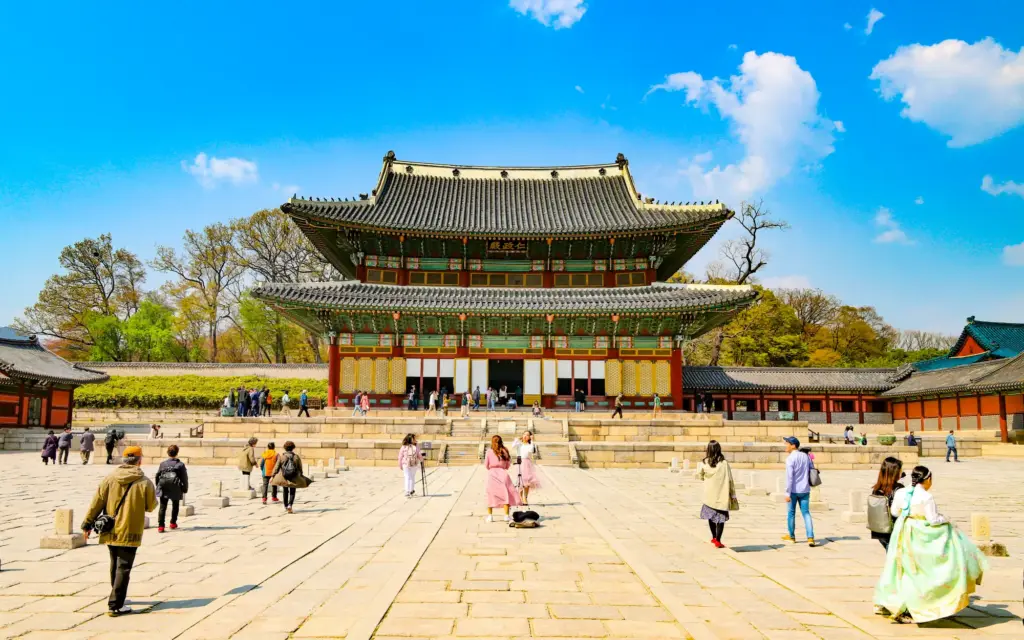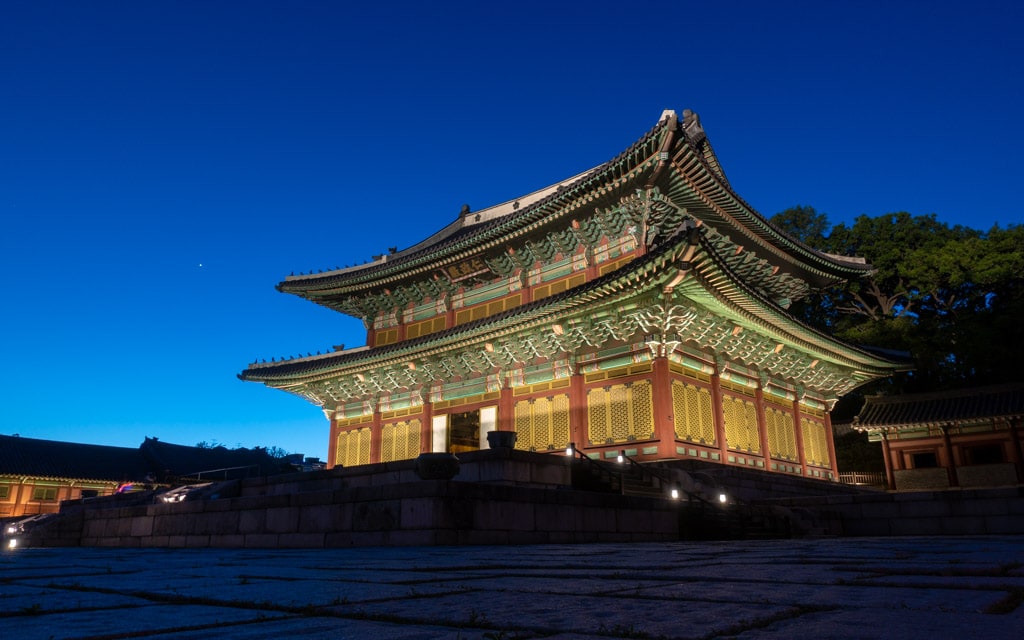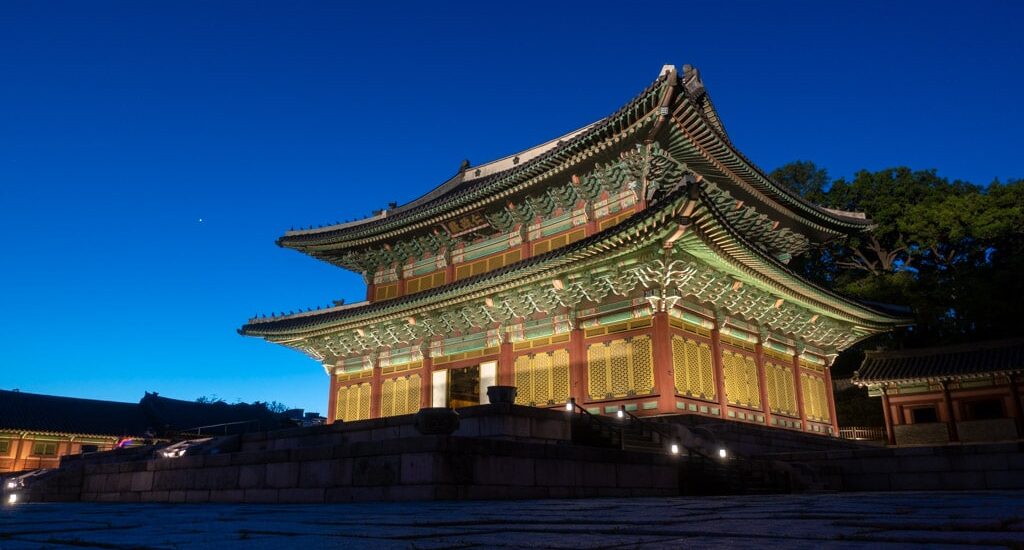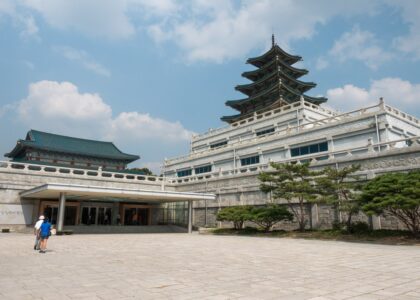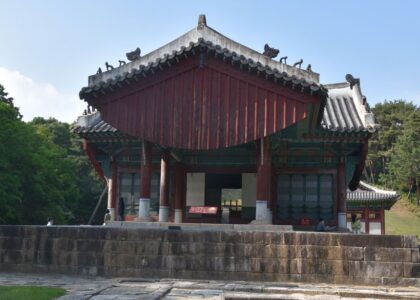Changdeokgung Palace, meaning “Palace of Prospering Virtue,” is a former royal palace in Seoul, South Korea, and the most well-preserved of the Five Grand Palaces of the Joseon Dynasty. Constructed in 1405 as a secondary palace to Gyeongbokgung, it gained prominence after Gyeongbokgung was destroyed in 1592. For about 270 years, it served as the de facto main seat of the dynasty.
Its most distinctive feature is its harmonious integration with nature. Unlike typical palaces built on flat ground with strict symmetry, Changdeokgung’s layout adapts to the hilly terrain, following pungsu (geomancy) principles. This design philosophy emphasizes blending the architecture into the natural landscape.
A major highlight is the Huwon, or the Secret Garden, which occupies about 60% of the grounds and was reserved for the royal family. It features pavilions, ponds, and lush woodlands designed to look natural. In 1997, the complex was designated a UNESCO World Heritage Site for its exceptional example of East Asian palace architecture and landscape design that perfectly embraces its surroundings. It has witnessed centuries of significant Korean history.
